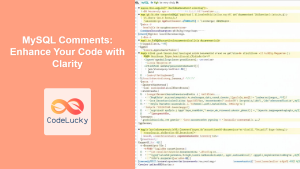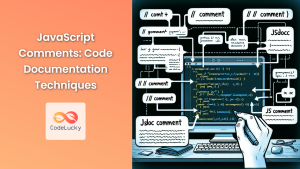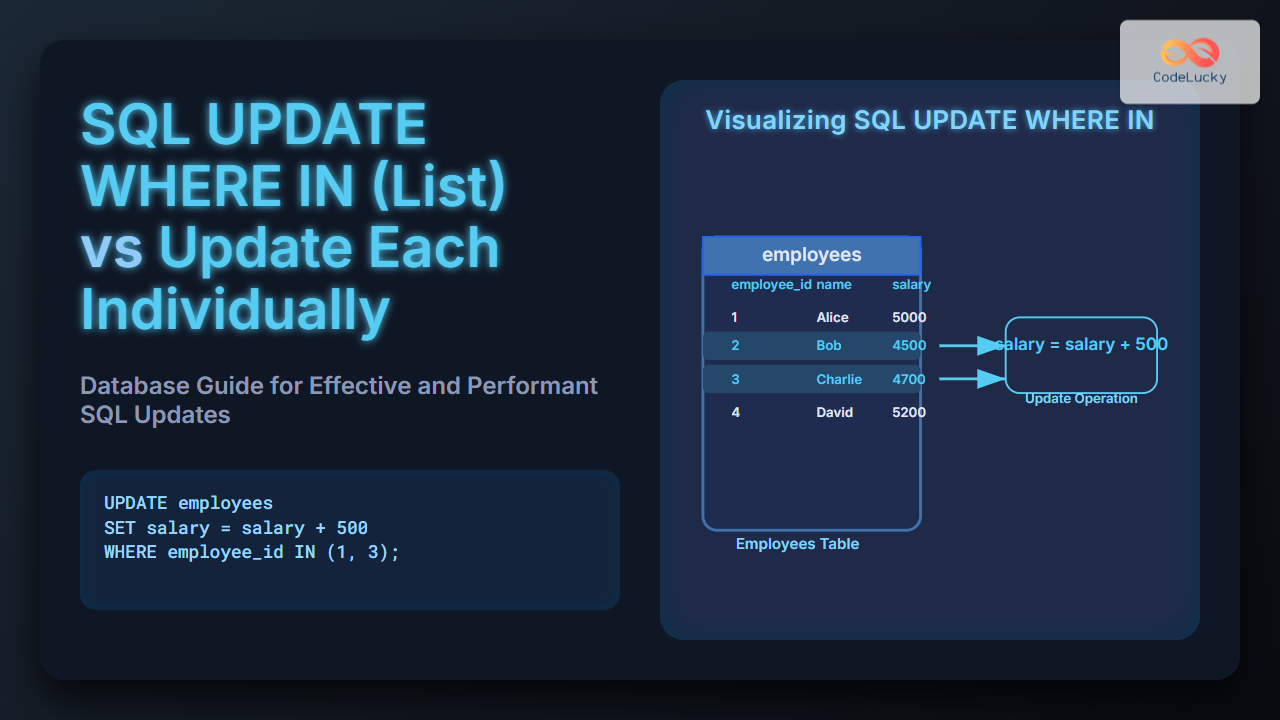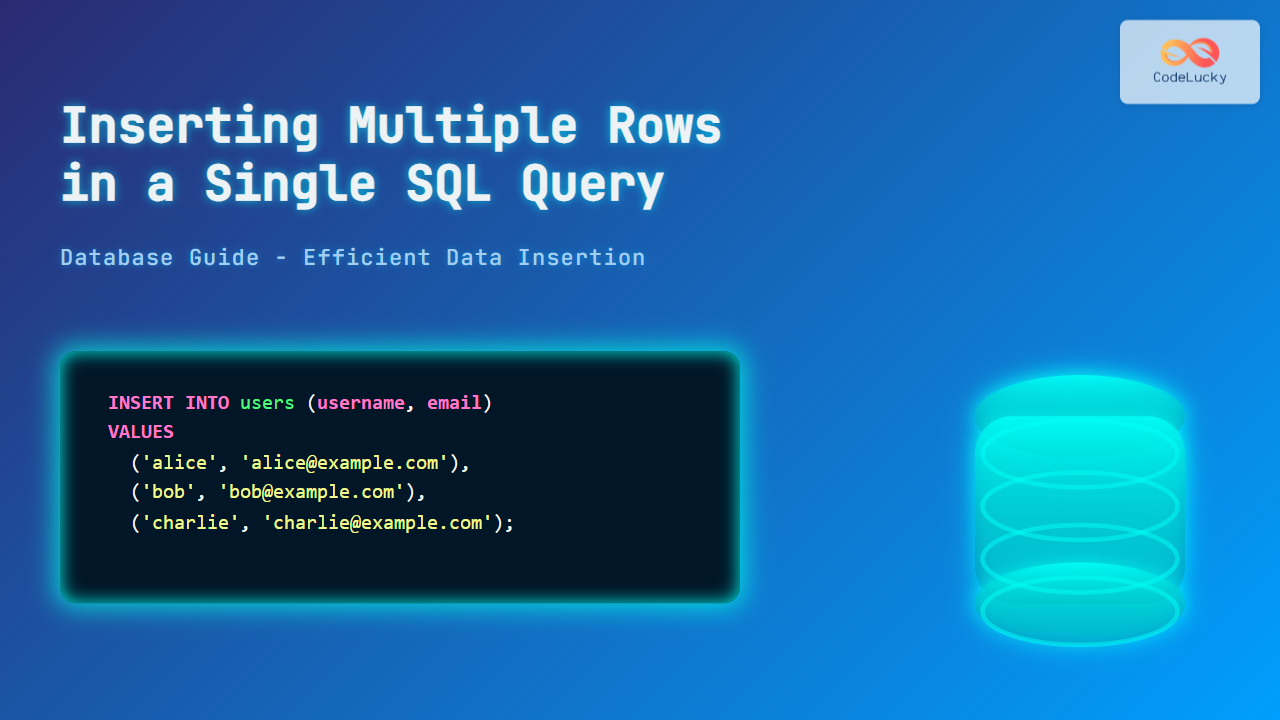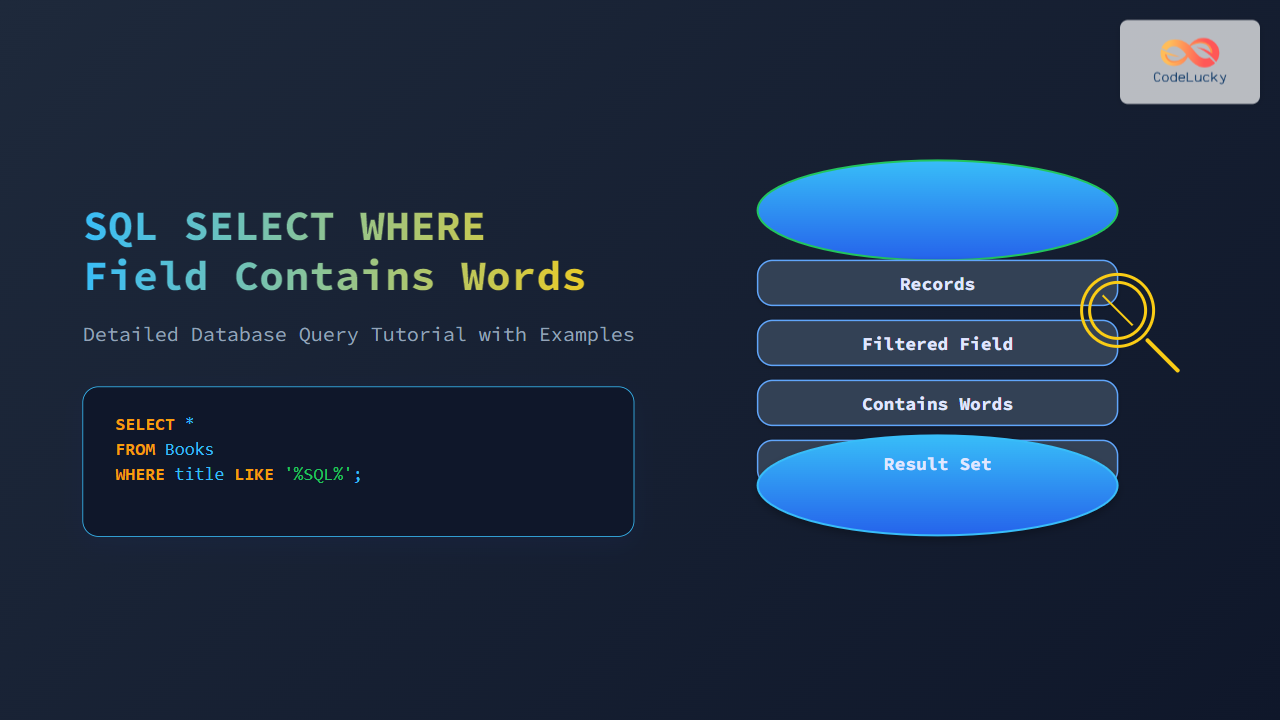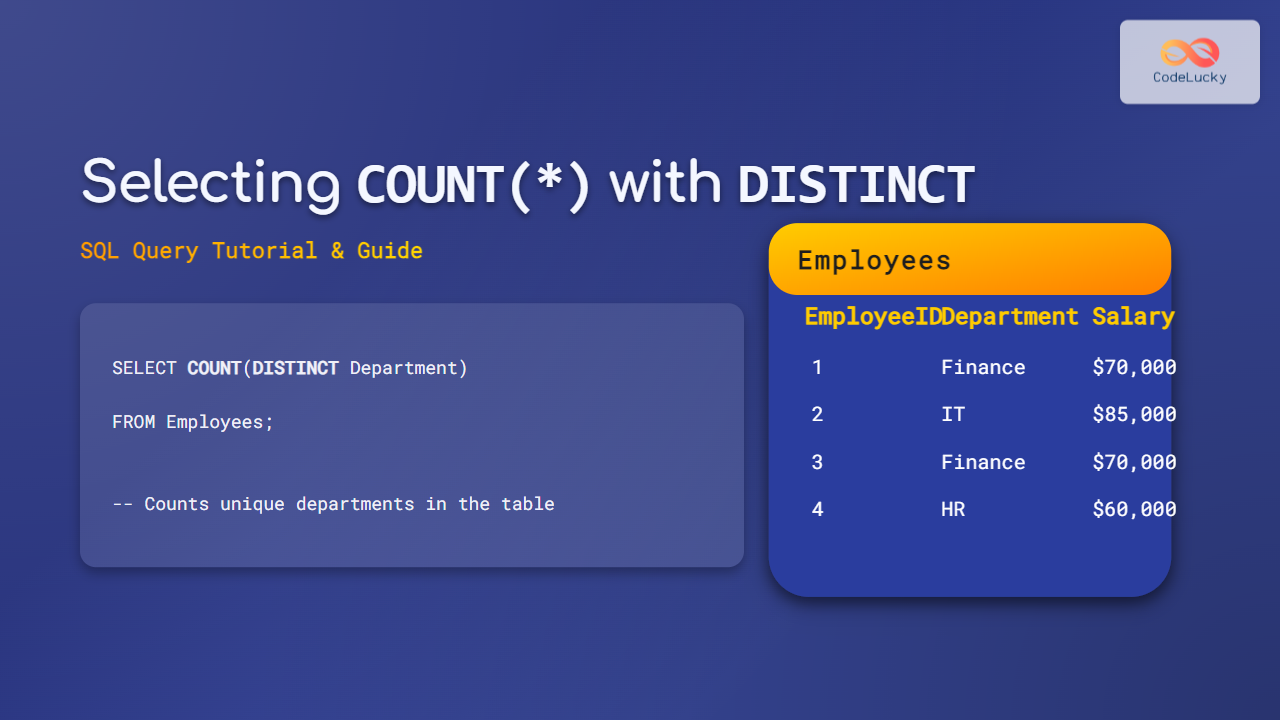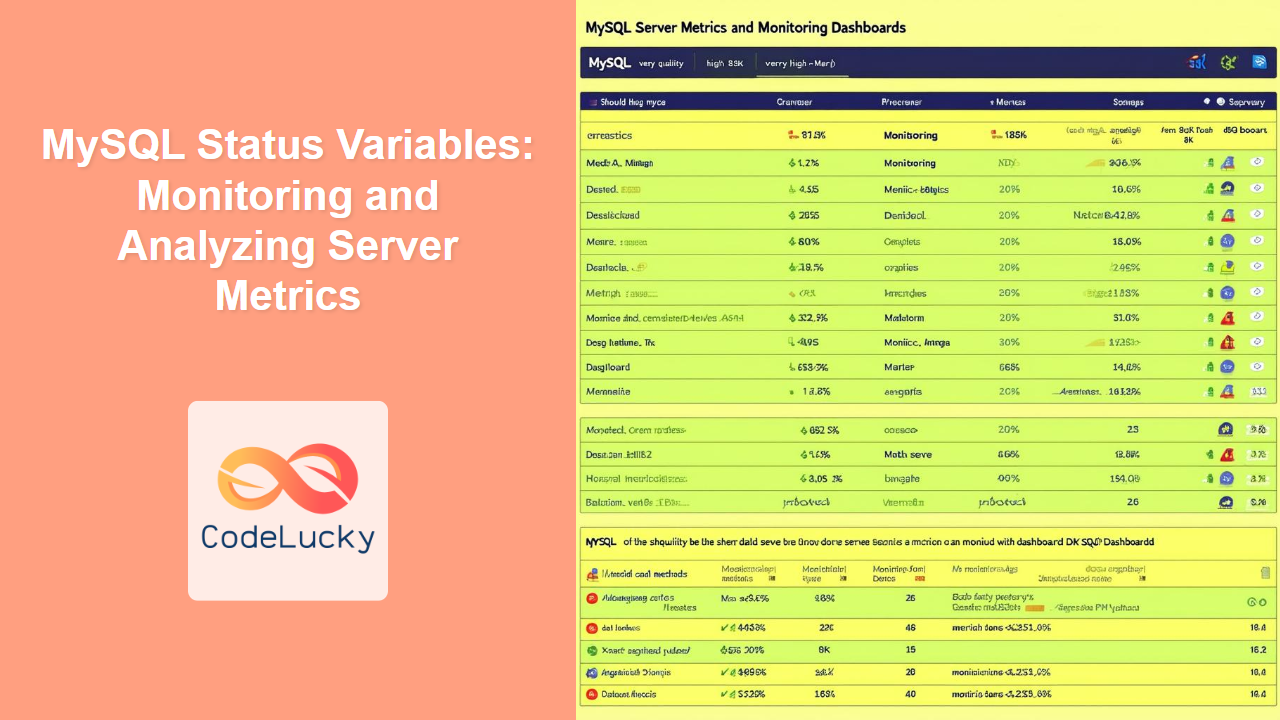In the world of database management and SQL programming, clarity is key. As your SQL scripts grow in complexity, it becomes increasingly important to document your code effectively. This is where SQL comments come into play. They serve as invaluable tools for explaining your code, making it more readable, and facilitating collaboration among team members. In this comprehensive guide, we'll explore the art of using SQL comments to enhance your database code documentation.
Understanding SQL Comments
SQL comments are non-executable lines of text within your SQL code that are ignored by the database engine when the script is run. They serve several crucial purposes:
- 📝 Explaining complex queries
- 🗂️ Organizing code sections
- 🚫 Temporarily disabling code
- 📚 Providing context for future reference
- 🤝 Enhancing team collaboration
Let's dive into the different types of SQL comments and how to use them effectively.
Single-Line Comments
Single-line comments are used for brief explanations or notes that fit on one line. In SQL, you can create a single-line comment using two dashes (–) at the beginning of the line.
-- This is a single-line comment
SELECT * FROM Employees; -- This selects all employees
Single-line comments are perfect for quick explanations or temporary notes. They're especially useful when you want to comment out a single line of code for testing purposes.
Multi-Line Comments
When you need to write longer explanations or comment out multiple lines of code, multi-line comments come in handy. In SQL, multi-line comments start with / and end with /.
/* This is a multi-line comment.
It can span several lines and is useful for
longer explanations or temporarily disabling
large blocks of code. */
SELECT FirstName, LastName, Salary
FROM Employees
WHERE Department = 'Sales';
Multi-line comments are ideal for providing detailed explanations of complex queries or documenting entire sections of your SQL script.
Best Practices for SQL Comments
Now that we understand the basics, let's explore some best practices for using SQL comments effectively:
1. Be Concise and Clear
While comments are crucial, avoid over-commenting. Your comments should add value, not clutter. Aim for clarity and conciseness.
-- Good: Calculates the average salary for each department
SELECT Department, AVG(Salary) AS AvgSalary
FROM Employees
GROUP BY Department;
-- Bad: This line selects the department and average salary
SELECT Department, AVG(Salary) AS AvgSalary
FROM Employees
GROUP BY Department;
2. Use Comments to Explain 'Why', Not 'What'
Your SQL code already shows what is being done. Use comments to explain why certain decisions were made or to provide context.
/* We're using a LEFT JOIN here because we want to include
all employees, even those without a current project assignment */
SELECT e.EmployeeID, e.FirstName, p.ProjectName
FROM Employees e
LEFT JOIN Projects p ON e.CurrentProjectID = p.ProjectID;
3. Document Complex Queries
For intricate queries involving multiple joins, subqueries, or complex logic, use comments to break down the query and explain each part.
/* This query finds the top-performing salesperson in each region
1. Calculate total sales for each salesperson
2. Rank salespeople within their region
3. Select the top-ranked salesperson for each region */
WITH SalesTotal AS (
SELECT SalespersonID, Region, SUM(SaleAmount) AS TotalSales
FROM Sales
GROUP BY SalespersonID, Region
),
RankedSales AS (
SELECT
SalespersonID,
Region,
TotalSales,
RANK() OVER (PARTITION BY Region ORDER BY TotalSales DESC) AS SalesRank
FROM SalesTotal
)
SELECT r.Region, e.FirstName, e.LastName, r.TotalSales
FROM RankedSales r
JOIN Employees e ON r.SalespersonID = e.EmployeeID
WHERE r.SalesRank = 1;
4. Use Comments for Version Control
Comments can be useful for tracking changes in your SQL scripts, especially if you're not using a formal version control system.
/* Version: 1.2
Date: 2023-06-15
Author: Jane Doe
Changes: Added index on LastName column for performance optimization */
CREATE INDEX idx_LastName ON Employees(LastName);
5. Comment Out Code for Testing
When troubleshooting or optimizing queries, use comments to temporarily disable parts of your code without deleting them.
SELECT OrderID, CustomerName, OrderDate, TotalAmount
FROM Orders
WHERE OrderDate >= '2023-01-01'
-- AND TotalAmount > 1000 -- Commented out for testing
ORDER BY OrderDate DESC;
Practical Examples of SQL Comments in Action
Let's look at some real-world scenarios where SQL comments can significantly improve code readability and maintainability.
Example 1: Documenting a Complex Join
Consider a query that joins multiple tables to generate a sales report:
/* This query generates a comprehensive sales report
by joining the following tables:
- Orders: Contains basic order information
- OrderDetails: Contains line items for each order
- Products: Contains product information
- Customers: Contains customer details
The report shows total sales per customer, including
their contact information and the number of orders placed. */
SELECT
c.CustomerID,
c.FirstName,
c.LastName,
c.Email,
COUNT(DISTINCT o.OrderID) AS TotalOrders,
SUM(od.Quantity * p.Price) AS TotalSales
FROM
Customers c
JOIN Orders o ON c.CustomerID = o.CustomerID
JOIN OrderDetails od ON o.OrderID = od.OrderID
JOIN Products p ON od.ProductID = p.ProductID
GROUP BY
c.CustomerID, c.FirstName, c.LastName, c.Email
ORDER BY
TotalSales DESC;
In this example, the comment at the beginning provides a clear overview of what the query does, which tables are involved, and what the output represents. This context is invaluable for anyone reviewing or maintaining the code.
Example 2: Explaining a Complex Calculation
When dealing with intricate calculations or business logic, comments can help clarify the reasoning behind the code:
/* Calculate the employee bonus based on the following criteria:
- Base bonus: 5% of annual salary
- Performance multiplier:
* Exceeds Expectations: 1.5x
* Meets Expectations: 1.0x
* Needs Improvement: 0.5x
- Tenure bonus: Additional 1% for every year of service (up to 10 years) */
SELECT
EmployeeID,
FirstName,
LastName,
AnnualSalary,
CASE
WHEN PerformanceRating = 'Exceeds Expectations' THEN 1.5
WHEN PerformanceRating = 'Meets Expectations' THEN 1.0
WHEN PerformanceRating = 'Needs Improvement' THEN 0.5
ELSE 0
END AS PerformanceMultiplier,
LEAST(YearsOfService, 10) AS BonusYears,
(AnnualSalary * 0.05 * -- Base bonus
CASE
WHEN PerformanceRating = 'Exceeds Expectations' THEN 1.5
WHEN PerformanceRating = 'Meets Expectations' THEN 1.0
WHEN PerformanceRating = 'Needs Improvement' THEN 0.5
ELSE 0
END + -- Performance multiplier
AnnualSalary * 0.01 * LEAST(YearsOfService, 10) -- Tenure bonus
) AS TotalBonus
FROM
Employees;
Here, the comment explains the bonus calculation formula in detail, making it easier for others to understand and verify the logic implemented in the query.
Example 3: Documenting a Stored Procedure
When creating stored procedures, comprehensive comments can serve as built-in documentation:
CREATE PROCEDURE usp_UpdateInventory
@ProductID INT,
@QuantityChange INT,
@UpdateType VARCHAR(10)
AS
BEGIN
/* Purpose: Update product inventory and log the change
Parameters:
- @ProductID: The ID of the product to update
- @QuantityChange: The amount to add (positive) or subtract (negative)
- @UpdateType: 'Restock' for adding inventory, 'Sale' for subtracting
Actions:
1. Update the Inventory table
2. Log the inventory change in the InventoryLog table
3. If inventory falls below threshold, insert a record into LowStockAlerts
Error Handling:
- Checks for invalid @UpdateType
- Prevents negative inventory
Last Modified: 2023-06-15 by John Smith */
-- Input validation
IF @UpdateType NOT IN ('Restock', 'Sale')
BEGIN
RAISERROR('Invalid UpdateType. Must be either ''Restock'' or ''Sale''.', 16, 1)
RETURN
END
-- Begin transaction
BEGIN TRANSACTION
DECLARE @CurrentStock INT, @NewStock INT
-- Get current stock
SELECT @CurrentStock = CurrentStock
FROM Inventory
WHERE ProductID = @ProductID
-- Calculate new stock
SET @NewStock = @CurrentStock +
CASE WHEN @UpdateType = 'Restock' THEN @QuantityChange
ELSE -@QuantityChange
END
-- Prevent negative inventory
IF @NewStock < 0
BEGIN
ROLLBACK
RAISERROR('Cannot reduce inventory below zero.', 16, 1)
RETURN
END
-- Update inventory
UPDATE Inventory
SET CurrentStock = @NewStock
WHERE ProductID = @ProductID
-- Log inventory change
INSERT INTO InventoryLog (ProductID, ChangeAmount, ChangeType, ChangeDate)
VALUES (@ProductID, @QuantityChange, @UpdateType, GETDATE())
-- Check for low stock and alert if necessary
IF @NewStock < (SELECT LowStockThreshold FROM Products WHERE ProductID = @ProductID)
BEGIN
INSERT INTO LowStockAlerts (ProductID, CurrentStock, AlertDate)
VALUES (@ProductID, @NewStock, GETDATE())
END
-- Commit transaction
COMMIT
END
In this stored procedure example, the comments provide a comprehensive overview of the procedure's purpose, parameters, actions, and error handling. This level of documentation is crucial for complex database objects that other developers may need to use or modify.
Conclusion
Effective use of SQL comments is an essential skill for any database developer. By following best practices and using comments judiciously, you can create SQL code that is not only functional but also easy to understand and maintain. Remember, well-commented code is a gift to your future self and your colleagues. It saves time, reduces errors, and facilitates smoother collaboration in database development projects.
As you continue to work with SQL, make it a habit to document your code thoroughly. Your comments should tell the story of your database, explaining the 'why' behind your queries and providing context that might not be immediately obvious from the code alone. With practice, you'll find that writing good comments becomes second nature, leading to more robust and maintainable database solutions.
Happy coding, and may your SQL always be clear, efficient, and well-documented! 🚀💾📊


